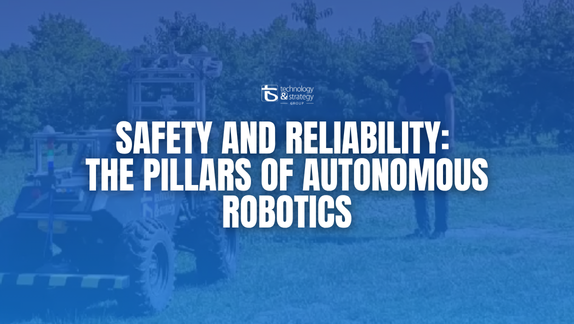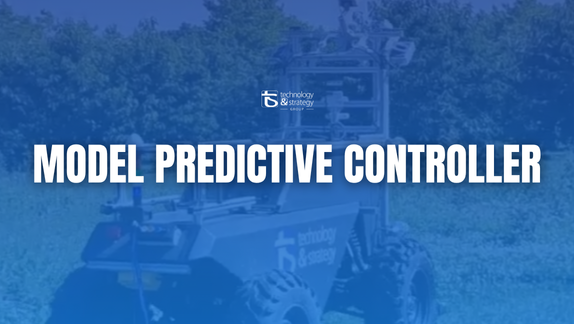When a leading European automotive manufacturer faced a critical challenge in their electric vehicle program—reducing battery management system failures by 40% while extending range—they discovered that traditional electrical engineering approaches couldn't solve their multidimensional problem. This intersection of electrical systems, thermal management, and digital intelligence represents the new frontier where modern electrical engineering operates, demanding expertise that transcends conventional boundaries.
Electrical engineering has undergone a remarkable evolution from its roots in power distribution to becoming the backbone of intelligent, interconnected systems. This transformation reflects not just technological advancement but a fundamental shift in how industries approach electrical system design, implementation, and optimization.
"Un bureau d'études ne doit pas être un simple support technique, mais un acteur actif du développement stratégique de l'entreprise" - demonstrating how modern electrical engineering requires strategic thinking beyond traditional technical boundaries.
The journey of electrical engineering begins with the fundamental challenge of power generation and distribution. Early electrical systems focused primarily on reliability and capacity, with limited intelligence or adaptability. These systems were designed with significant redundancy to ensure continuous operation, often at the expense of efficiency.
Today's electrical systems represent a quantum leap in capability and complexity. Modern electrical infrastructure incorporates real-time monitoring, adaptive control algorithms, and predictive maintenance capabilities. This evolution has been driven by the integration of computational intelligence, advanced sensors, and sophisticated control methodologies.
The advancement of electrical engineering brings with it a new set of challenges that demand innovative approaches:
The most transformative aspect of modern electrical engineering is its convergence with digital technologies. This integration has created entirely new capabilities and application domains through smart factory implementations and advanced automation systems.
Digital Twin Technology has revolutionized how electrical systems are designed, tested, and optimized. By creating accurate virtual representations of physical electrical systems, engineers can simulate performance under various conditions and identify potential issues before implementation.
Edge Computing enables distributed intelligence in electrical systems, allowing for real-time decision-making at the point of need rather than relying on centralized control. This approach minimizes latency, reduces bandwidth requirements, and enhances system resilience.
Despite the rapid evolution of the field, successful electrical engineering still relies on mastery of fundamental principles. These core concepts form the foundation upon which advanced applications are built, enabling innovations while ensuring safety, reliability, and performance.
Power systems engineering remains central to electrical engineering practice, focusing on the generation, transmission, and distribution of electrical power. Modern power systems face increasing demands for efficiency, reliability, and adaptability to accommodate renewable energy sources and variable loads.
Smart Grid Technologies enable bidirectional energy flow, real-time monitoring, and automated response to changing conditions. These technologies transform traditional power grids into dynamic, responsive networks capable of integrating diverse energy sources and optimizing distribution.
Traditional Power SystemsSmart Grid SystemsUnidirectional power flowBidirectional energy exchangeLimited monitoring capabilitiesReal-time system visibilityManual fault isolationAutomated self-healingCentralized generationDistributed energy resources
Control systems engineering forms the intelligence layer of modern electrical systems, enabling precise, responsive, and adaptive operation. The evolution from analog to digital control has dramatically expanded capabilities while creating new design challenges through advanced embedded electronic engineering approaches.
Real-time Control Systems operate on millisecond or microsecond timescales, requiring deterministic performance and robust error handling. These systems are essential in applications ranging from motor drives to battery management systems, where precise timing is critical for both performance and safety.
Model Predictive Control (MPC) uses dynamic models of the controlled process to anticipate future behavior and optimize control actions. This advanced technique enables more precise control of complex systems with multiple interacting variables and constraints.
The ability to acquire, process, and transmit information is fundamental to modern electrical systems. Advanced signal processing and communication technologies enable the high-speed, reliable data exchange that underpins intelligent electrical infrastructure.
The automotive industry has undergone an unprecedented transformation, with electrical engineering emerging as the primary enabler of innovation. The shift from primarily mechanical systems to complex electromechanical architectures has fundamentally changed vehicle design, manufacturing, and operation.
At the heart of electric vehicle technology lies the Battery Management System—a sophisticated integration of hardware and software that ensures safe, efficient, and reliable operation of high-voltage battery packs. BMS design represents one of the most challenging aspects of automotive electrical engineering.
Modern BMS architectures typically employ a distributed topology with a master controller coordinating multiple cell monitoring units. This approach provides the scalability and fault tolerance necessary for automotive applications while optimizing cost and complexity.
The electrification of transportation depends not just on vehicle technology but on the charging infrastructure that supports it. This infrastructure presents unique electrical engineering challenges at the intersection of power systems, control engineering, and communications.
High-Power Charging Systems must deliver hundreds of kilowatts safely and efficiently, requiring sophisticated power electronics and thermal management. Modern fast chargers employ silicon carbide (SiC) semiconductors to achieve higher switching frequencies and efficiency.
Beyond propulsion, modern vehicles incorporate numerous safety-critical electrical systems that must function reliably under extreme conditions. These systems exemplify the convergence of electrical engineering, digital technology, and automotive safety requirements.
Brake-by-Wire Systems replace traditional hydraulic connections with electrical signals and electromechanical actuators, requiring redundant power supplies, communication networks, and control units. These systems must achieve Safety Integrity Level (SIL) 3 or 4 under ISO 26262.
The global shift toward sustainable energy systems has placed electrical engineering at the forefront of one of society's greatest technical challenges. The transition from centralized, fossil-fuel-based generation to distributed, renewable energy requires fundamental changes in how electrical systems are designed, operated, and controlled.
The traditional power grid was designed for unidirectional power flow from large generating stations to consumers. Smart grids transform this model through bidirectional power flow, distributed intelligence, and dynamic optimization, creating new electrical engineering challenges at every level.
Advanced Distribution Management Systems (ADMS) integrate multiple functions including outage management, fault location, and Volt/VAR optimization into cohesive platforms that enhance grid reliability and efficiency. These systems process data from thousands of sensors throughout the distribution network.
"Au Software Lab, nous jouons un rôle central à toutes les étapes du cycle de vie des projets : architecture, développement, tests, validation et documentation. La qualité est au cœur de notre travail, car elle est essentielle à la réussite."
The integration of renewable energy sources introduces variability and uncertainty into power system operation, requiring new approaches to system design and control. Electrical engineers must develop solutions that accommodate the unique characteristics of these resources while maintaining system reliability.
Energy storage represents a critical enabling technology for renewable integration and grid flexibility. The diversity of storage technologies, each with unique characteristics and constraints, creates a complex design space requiring specialized electrical engineering expertise.
Battery Energy Storage Systems (BESS) have emerged as the dominant grid-scale storage technology, offering modularity, rapid response, and improving economics. The design of BESS installations involves power conversion systems, battery management, thermal control, and grid integration.
Storage TechnologyResponse TimeDurationApplicationsBattery StorageMillisecondsMinutes to hoursGrid stabilization, peak shavingFlywheel StorageMillisecondsSeconds to minutesFrequency regulation, UPSHydrogen SystemsMinutesHours to daysLong-term storage, backup power
The fourth industrial revolution, characterized by the fusion of physical and digital systems, represents a fundamental transformation in how industrial processes are designed, monitored, and controlled. Electrical engineering plays a pivotal role in this transformation through smart product realization and advanced manufacturing systems.
Digital twin technology creates virtual representations of physical electrical systems that evolve in parallel with their real-world counterparts. This approach enables unprecedented visibility, analysis, and optimization capabilities throughout the lifecycle of electrical infrastructure.
System Design and Simulation applications use digital twins to validate designs before physical implementation, reducing risk and accelerating development. These simulations incorporate detailed models of electrical, thermal, and mechanical behavior.
The Industrial Internet of Things (IIoT) extends connectivity to previously isolated electrical components, creating networks of intelligent devices that generate data and respond to commands. This connectivity transforms traditional electrical systems into dynamic, responsive networks.
The combination of comprehensive monitoring, advanced analytics, and domain expertise enables predictive maintenance strategies that significantly improve reliability while reducing maintenance costs. Electrical equipment particularly benefits from these approaches due to well-understood degradation mechanisms.
Condition Monitoring Technologies detect early indicators of developing problems through techniques including partial discharge analysis, infrared thermography, and vibration monitoring. These technologies are increasingly integrated into electrical equipment.
The increasing complexity and interdisciplinary nature of electrical engineering demands sophisticated tools and methodologies to manage design, validation, and implementation. These capabilities have evolved from isolated point solutions to integrated platforms supporting the entire engineering lifecycle.
Simulation has become indispensable in modern electrical engineering, enabling virtual exploration of design alternatives and validation of performance before physical implementation. The evolution of simulation tools reflects the increasing complexity of electrical systems.
Circuit-Level Simulation tools such as SPICE remain fundamental for component-level design, allowing engineers to predict electrical behavior with high fidelity. Modern implementations extend these capabilities with advanced semiconductor models and statistical analysis features.
System-Level Modeling addresses the complexity of integrated electrical systems through multi-domain simulation environments. Tools such as Simulink and Modelica enable modeling of electrical, mechanical, thermal, and control aspects within unified frameworks.
As electrical systems become more complex and safety-critical, comprehensive testing and validation become increasingly important. Modern approaches combine traditional physical testing with advanced simulation and automated verification methods.
Standards provide the framework for safe, reliable, and interoperable electrical systems. The landscape of relevant standards continues to evolve, reflecting technological advancement and changing societal expectations.
Safety Standards establish requirements for protecting people and property from electrical hazards. These standards address issues including insulation, grounding, overcurrent protection, and safety-critical control functions.
Our expertise in Model-Based Systems Engineering (MBSE) enables comprehensive compliance management throughout the development lifecycle, ensuring systematic traceability from requirements to implementation.
Modern electrical engineering projects increasingly span traditional disciplinary boundaries, requiring integration of diverse technologies and domains. This cross-domain nature demands broader expertise and new approaches to system integration.
The boundaries between mechanical and electrical domains continue to blur, particularly in areas such as mechatronics, electromechanical systems, and packaging of electronic components. Successful integration requires understanding of both domains and their interactions.
Thermal Management represents a critical area where mechanical and electrical considerations converge. Power electronic components, high-performance processors, and battery systems all generate significant heat that must be managed to ensure reliability and performance.
The traditional distinction between hardware and software continues to erode, with functionality increasingly distributed across physical and logical domains. This convergence creates new design challenges and opportunities for optimization.
Hardware-Software Co-design approaches recognize the interdependence of hardware and software, developing them in parallel with continuous integration and testing. This methodology has become essential for complex systems where hardware choices affect software performance.
As electrical systems become more connected and software-dependent, cybersecurity emerges as a crucial consideration in system design, implementation, and operation. Protection of critical electrical infrastructure requires comprehensive approaches addressing both technical and organizational aspects.
The electrical engineering discipline continues to evolve rapidly, driven by technological innovation, changing requirements, and convergence with adjacent fields. Several emerging trends are likely to shape the future of the field, creating new opportunities and challenges for practitioners.
Artificial intelligence is transforming how electrical systems are designed, operated, and maintained. The combination of abundant data from connected devices with sophisticated machine learning algorithms enables new approaches to system optimization.
Generative Design uses AI algorithms to explore design spaces and propose solutions that human engineers might not consider. These tools take system requirements as inputs and generate multiple design alternatives, optimizing for objectives including performance, cost, size, and reliability.
Autonomous Control Systems leverage reinforcement learning and other AI techniques to develop control strategies that adapt to changing conditions and optimize performance over time. Unlike traditional control approaches, these systems learn optimal behavior through interaction with the environment.
Environmental considerations have become central to electrical engineering practice, driving innovations in energy efficiency, material selection, and lifecycle management. This trend reflects both regulatory requirements and growing recognition of sustainability as a business imperative.
The centralized generation model that dominated electrical power systems for over a century is giving way to distributed, networked architectures with bidirectional power flow and local intelligence. This transformation creates new requirements for control, protection, and integration.
Resilient Microgrid Architectures enable local energy systems to operate both connected to the main grid and in islanded mode during outages or disturbances. These systems incorporate distributed generation, storage, and intelligent load management.
The impact of advanced electrical engineering becomes most apparent through concrete examples of industry transformation. These case studies illustrate how innovative approaches to electrical system design and implementation deliver tangible benefits across multiple sectors.
A European automotive OEM faced significant challenges in their electric vehicle program, including limited range, high battery system complexity, and thermal management issues. The traditional development approach created integration problems and suboptimal overall performance.
Our integrated approach began with comprehensive system modeling, creating a digital twin of the complete vehicle electrical architecture. This model incorporated battery characteristics, power electronics, thermal behavior, and control algorithms in a unified simulation environment.
A multinational manufacturing company sought to reduce energy costs and carbon footprint across their European production facilities while maintaining reliability and production throughput. Traditional energy management approaches had delivered only incremental improvements.
Our solution integrated previously isolated electrical infrastructure into a comprehensive energy management platform with factory-wide sensor networks, digital twin modeling, and AI-powered optimization engines.
The implementation delivered multiple benefits: 17% reduction in overall energy consumption, 35% decrease in peak demand charges, and 22% increase in renewable energy utilization, demonstrating how smart validation approaches can transform industrial energy systems.
A global technology company required a new approach to power infrastructure for their European data centers, facing challenges including increasing power density, sustainability requirements, and the need for 99.9999% reliability despite growing grid instability.
Our solution reimagined the entire power distribution architecture through hybrid AC/DC distribution, advanced protection systems, and integrated energy storage combining multiple technologies for comprehensive backup power capability.
The complexity and strategic importance of electrical engineering projects make partner selection a critical decision. The right engineering partner brings not just technical capabilities but also domain knowledge, methodological rigor, and alignment with business objectives.
Evaluating technical capabilities requires looking beyond general claims to specific expertise relevant to your project requirements. Key areas to assess include domain-specific experience, design and analysis capabilities, and testing infrastructure.
Domain-Specific Experience in the technologies and applications central to your project is essential. For automotive electrical systems, relevant expertise includes high-voltage architecture, functional safety implementation, and electromagnetic compatibility.
Engineers with experience across multiple industries often bring valuable perspective and innovative approaches to challenging problems. This cross-pollination of ideas can deliver significant advantages through technology transfer and broader problem-solving perspectives.
Our team's expertise spans automotive, industrial automation, energy systems, and aerospace applications, enabling us to bring proven solutions from adjacent industries to new applications and contexts.
As electrical systems become more connected and software-dependent, digital integration capabilities become critical success factors for engineering projects. Key areas include software development practices, data management and analytics, and cybersecurity expertise.
The convergence of electrical engineering with digital technologies requires partners who understand both traditional electrical principles and modern software architectures, enabling comprehensive system integration and optimization.
The journey through electrical engineering's evolution demonstrates how this discipline has transformed from a specialized technical field to a central enabler of innovation across industries. From fundamental principles to cutting-edge applications in automotive electrification, energy transition, and Industry 4.0, electrical engineering continues to expand its scope and impact.
As you consider your organization's electrical engineering challenges and opportunities, we invite you to explore how our integrated approach—combining deep technical expertise with innovation and cross-industry experience—can accelerate your development journey and deliver competitive advantages in today's complex engineering landscape.



Discover how Englab's R&D Center ensures the safety and reliability of autonomous robots through advanced technologies and strict protocols.
READ MORE
Discover how Englab develops a Model Predictive Controller (MPC) enabling autonomous off-road vehicles to navigate safely in complex, unstructured terrains.
READ MORE
Discover how engineering-driven strategies capture 70% more market value by 2025. Master technical excellence, systems integration & competitive moats that last.
READ MORE